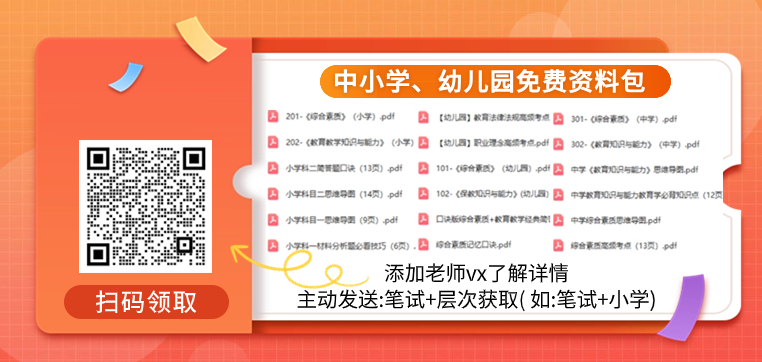2019上半年上海教师资格证高中面试真题:听力教学
- 时间:
- 2019-06-11 11:58:38
- 作者:
- 胡老师
- 阅读:
- 来源:
- 上海教师资格证




高中英语 听力
一、考题回顾
试讲题目1.题目:听力教学试讲
2.内容:
The word “tsunami” often arouses panic and fear. Yet there is no need to be so anxious if you know what to do. As long as you have ten minutes warning, you will survive no matter how powerful the actual tsunami may be. Unfortunately, many people are unconscious of the risk they may be facing. As soon as you hear the warning, put on your shoes and walk inland as quickly as you can. Do not fear, tremble or remain tied to the spot at the thought of those high waves. Ten minutes running away from the sea is all you need to save yourself from danger. Remember this and you will be absolutely safe.
3.基本要求:
(1) 朗读所给段落
(2) 配合教学内容适当板书
(3) 针对该段落的内容,设计相应的听力理解教学活动。
(4) 用英文试讲
(5) 试讲时间:10分钟。
答辩题目1.How to evaluate students’ performance?
2. Please the person that influence you most.
二、考题解析
【教案】
Teaching aims:
Knowledge aims:
(1) Students are able to understand the content of the passage.
(2) Students can master some basic reading strategies.
Ability aim:
Students can use different basic reading strategies like analyzing, grasping details correctly in their reading process.
Emotional aim:
Students will be more willing to get involved in class activities and boost their interest in learning English.
Students may enhance their awareness towards some natural disasters.
Key and difficult point:
Key Point: understand the main content of the passage.
Difficult Point: improve students’ learning interest and boost their confidence of speaking in public.
Teaching procedures:
Step 1: Warming-up
1. Greeting.
2. Watch a video:
Show students a short video clip about earthquake and ask students to answer some questions:
(1). What happened in the video?
(2). Are you afraid of such kind of disaster?
Invite two students to share their answers and lead in the topic- disaster.
Step 2: Pre-listening
1.Brainstorming:
Ask students how many kinds of natural disasters they know, try to recall some words related to natural disasters. Write down some of their answers on the blackboard to and give evaluation to the students.
2.Prediction:
Ask students to make a prediction about what kind natural disaster may be mentioned in the passage.
Step 3: While-listening
A. Extensive listening:
1.Let students to listen to the passage for the first time. Ask students a question: What kind of disaster is mentioned in the passage? (This passage talks about the tsunami)
2.Then invite one student answer the question and give evaluation.
B. Intensive listening:
1.Ask students to listen to the passage for the second time and finish the exercise on the blackboard to have a better understand about the disaster:
1). If you have a ten minutes warning, you will not survive. (T/F)
2). What should you do after you hear the warning?
3). What shouldn’t we do at the thought of those high waves?
…
2.Then invite two students to answer these questions separately and give evaluation. Write down the right answers on the blackboard.
3. Read the passage for the students and ask them to pay attention to the pronunciation and intonation.
Step4: post-listening
1.Discussion:
Divide students into groups of 4 and lead them to have a discussion about what else should we to protect ourselves from tsunami. 5 minutes will be given and after that, choose some representatives to share their ideas.
2. Interview:
Ask students to work in pairs, one is the interviewee and the other is the interviewer. Then make an interview to imitate a reporter to interview a victim suffered from tsunami.
Step5: Summary and Homework
Summary: ask a student to conclude the content of the lesson and summarize with the whole class.
Homework: Surf on the Internet and find more natural disasters and make a poster about their findings.
Blackboard design:略
【答辩题目解析】
1.How to evaluate students’ performance?
【参考答案】
Students may make some mistakes during their process of learning, but as for how to correct their mistakes, it is an art. Students in this age like being praised by teachers and do not want to be blamed for their mistakes. So, as a teacher, we must know to evaluate students’ performance artfully. No matter what their answers are, we must give them positive evaluations to encourage them. For example, we can say to them “good job” “well done” “you are a good listener” “you can do better next time” and so on to respond to their performance. If we correct their mistakes directly, they may lose hear in learning. So, we teachers must praise them more, and they may get more interested in our English class.
2. Please the person that influence you most.
【参考答案】
When it comes to the person that influence me most, I would think of my English teacher in senior high school. She is the most helpful person that I have ever met. At that time, we are very naughty and do not know the importance of study. Though she was not responsible for the management of our class, but she would spend some of her spare time to tell us the importance of study. Our English is very poor also, she would try her best to teach us some good ways to memorize words and improve our listening, reading, speaking abilities and so on. Finally, the majority of us all passed the test for college entrance examination. And influenced by her, I choose English/ English education as my major. I am looking forward to being a teacher just like her.





























